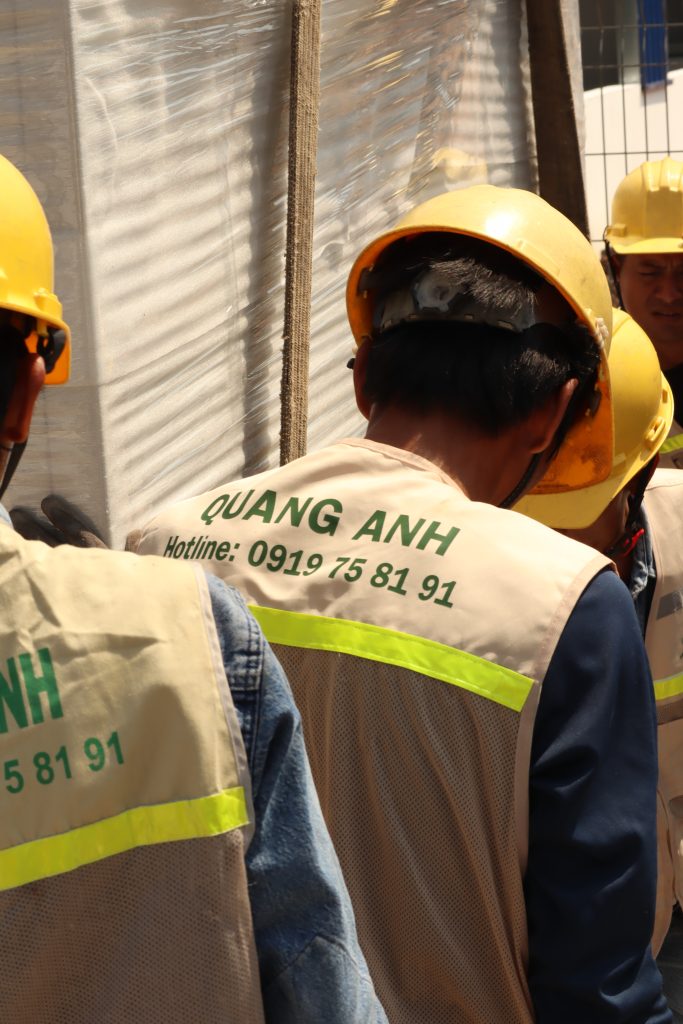News
HVAC System Installation Services for Factories: Comprehensive and Effective Solutions
The HVAC system plays an important role in controlling the air environment in factories, with diverse installation services from design, installation to maintenance.
Introduction to the HVAC System
The HVAC system (Heating, Ventilation, Air Conditioning) is a comprehensive solution to control temperature, humidity, and air quality in factories and various types of buildings. Common applications of this system include industrial manufacturing, commercial buildings like shopping centers, and pharmaceutical and food production areas. This system is not only important to maintain a comfortable working environment, but also to ensure efficient and sustainable production operation.
HVAC stands for Heating, Ventilation and Air Conditioning. This is a key technical component in modern buildings, ensuring a comfortable, healthy, and safe living and working environment.
Main functions of the HVAC system
- Heating: Provides heat to maintain warm temperatures in the space when the weather is cold.
- Ventilation: Supplies fresh clean air and removes polluted air from the internal space.
- Air Conditioning: Controls temperature, humidity, and filters the air to create a cool, comfortable environment.
Structure and main components
- Heat exchanger: Exchanges temperature between the external environment and indoor air.
- Cooling equipment: Compressors and condensers to cool the air.
- Heaters: Provides heat when necessary.
- Fans and ducts: Moves air to needed areas.
- Filtering system: Includes HEPA filters to remove dust, bacteria ensuring air quality.
- Pumps, regulating valves: Circulates hot/cold water and adjusts the amount of air, steam as required.
Operating principles
- Air intake: Air from outside is drawn in through intakes and the Air Handling Unit (AHU).
- Air quality adjustment: Air is adjusted for humidity, temperature and cleansed through HEPA filters to remove dust and bacteria.
- Air recirculation: About 90% of the air is recirculated, and 10% is expelled outside.
- Air cycle:
- Supply Air: Provides air that is adjusted and filtered clean.
- Return Air: Air is recovered from the room for reuse.
- Exhaust Air: Polluted air is expelled outside.
Types of HVAC systems
- Installation location: Centralized or decentralized.
- Cooling and heating method: Uses water, steam, or gas.
- System structure: Air duct system, chilled water pipe system.
Application of the HVAC system
The HVAC system is not only widely used in residential constructions but is also very useful in commercial buildings, shopping centers, healthcare facilities, and manufacturing plants where strict temperature and humidity control is necessary.
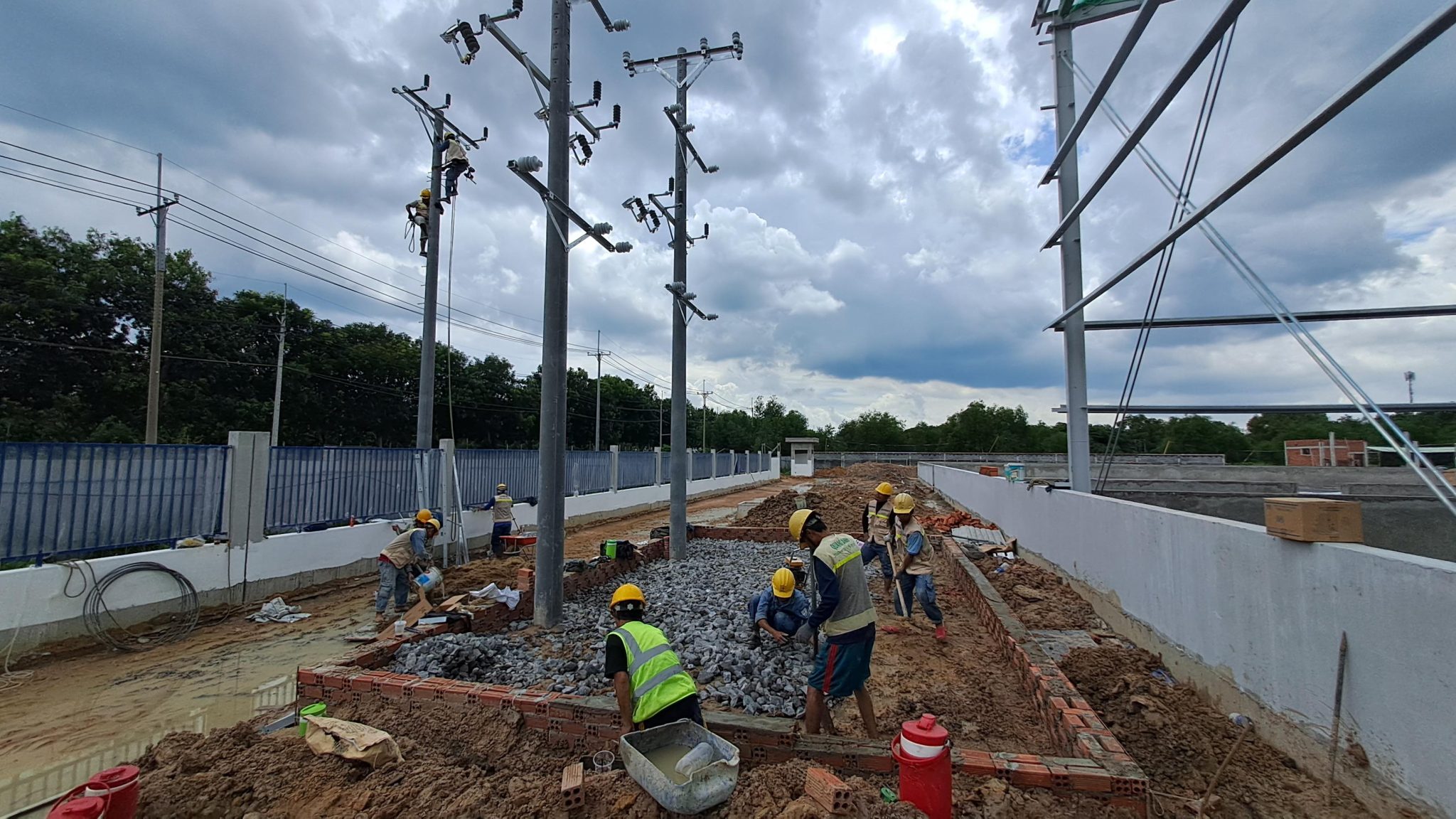
Main Components of the HVAC System
The HVAC system integrates many core components such as heating, ventilation, and air conditioning. It includes: Heating System with furnaces and water heaters; Ventilation System ensuring air circulation, pollution removal; Air Conditioning System with space cooling function through air handling units like AHUs and air filters. Automatic control equipment is applied to adjust air parameters effectively, enhance energy management features.
Within the HVAC system, three main components ensure effective operation include heating systems, ventilation systems, and air conditioning units. Each component plays an essential role in maintaining ideal air conditions for construction projects.
- Heating systems: Responsible for providing heat for living spaces during cold days, typical devices include furnaces, water heaters, boilers, and heat pumps. These devices can operate on electricity, gas, oil, or coal, delivering heat through hot water pipes.
- Ventilation systems: The main function of the ventilation system is air circulation, removing polluted gases and toxic vapors along with moisture regulation. Typical equipment in the ventilation system includes fans, air supply ducts, and air filters ensuring the removal of dirt particles.
- Air conditioning units: Ensure cooling for spaces by removing hot air and introducing cool air. Typical devices include air handling units (Air Handling Units), compressors, coils, and heat exchangers, cooling and heating units using refrigerant to regulate the temperature.
Besides the main components, the HVAC system also includes important auxiliary devices such as:
- Compressor: Plays a key role in circulating the refrigerant within the refrigeration cycle, is the “heart” of the cooling system.
- Air filters: Ensures the best air quality by removing dirt and fine dust.
- Humidity control devices: Humidifiers or dehumidifiers are added to adjust the air humidity, adapting to the environment and usage needs.
- Duct systems and air outlets: Support effective air distribution throughout the entire HVAC space.
By closely and logically coordinating between HVAC components, this system not only ensures the desired temperature and humidity conditions but also improves air quality, playing a crucial role in protecting user health and improving energy efficiency.
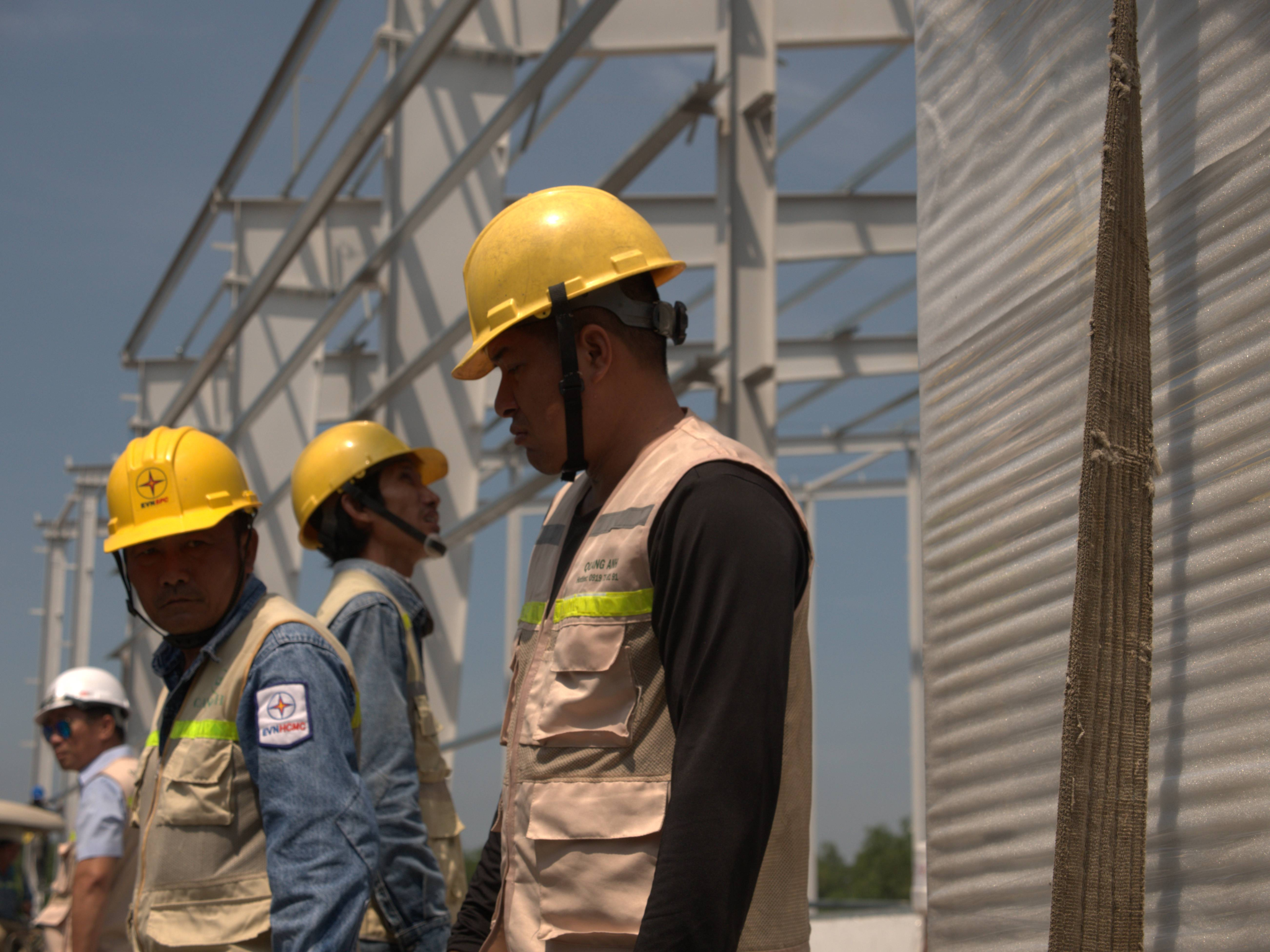
Operating Principles of the HVAC System
The HVAC system operates based on principles of heat transfer, insulation, thermodynamics, and fluid mechanics. Devices in the system, from heating systems to ventilation and air conditioning units all coordinate to maintain favorable air conditions. The interaction between these components enables the system to adjust temperature, humidity, and air pressure to provide a safe and comfortable working environment for all production and living activities in the factory.
Basic Operation of the HVAC System
The HVAC system plays a crucial role in controlling environmental conditions in areas such as buildings, factories, and clean rooms. The operation of the HVAC system includes circulating air flow, thermal processing, and air filtering to create a favorable and safe environment.
Air Flow in the System
The HVAC system deploys three main air flows to optimize air quality and management:
-
Fresh Air: Air drawn from the external environment is processed for dirt and modified for factors such as temperature and humidity before being introduced into the indoor space.
-
Return Air: Majorly consisting of 80–90% indoor air, it is recovered for reprocessing, saving energy, and maintaining stable environmental indices.
-
Exhaust Air: Approximately 10–20% of the air is expelled outside to maintain cleanliness and proper oxygen levels.
Steps of Air Processing
The HVAC system operates through a detailed process for air treatment as follows:
- Fresh air intake and pre-processing: Outside air is purified of dirt and large impurities before entering the system.
- Temperature, humidity adjustment: Undergoes heat exchangers to stabilize as per requirements.
- Air purification: Utilizes specialized filters to meet required cleanliness standards.
- Air distribution: Air is supplied and distributed through air ducts.
- Air recovery and reuse: Recycles most air to save energy.
- Air discharge outside: Some discharge is expelled to balance pressure and maintain oxygen concentration.
Main Components of the System
- AHU (Air Handling Unit): Plays a central role in air treatment including filtering and adjusting temperature, and humidity.
- Heat Exchanger: Coils to heat/cool helping to adjust air temperature as desired.
- Air Filtering System: Ensures the best air quality before it enters the usage area.
- Fan, Ducts and Vent Systems: Ensures effective air circulation within the space.
- Automated Control System: Control parameters such as temperature, and humidity to maintain energy savings.
Applications and Physical Basis
HVAC is widely applied in industry, healthcare, commercial and residential buildings thanks to its ability to precisely control environmental conditions based on physical principles such as thermodynamics and fluid dynamics.
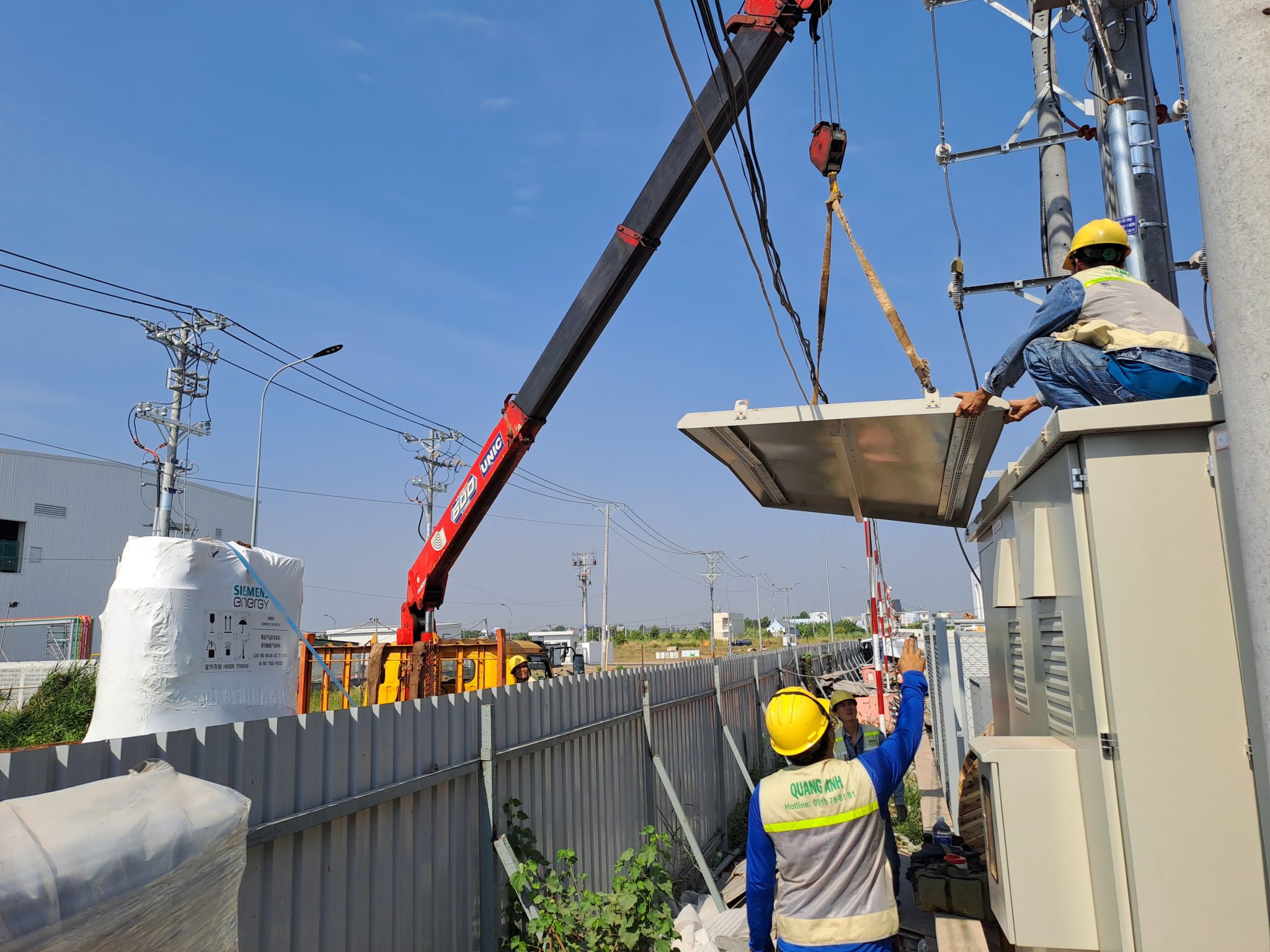
HVAC System Installation Services
HVAC system installation services for factories include designing and installing suitable systems for specific scales. From there, the service continues with the integration of smart technologies to optimize performance and energy savings. In addition, regular operational maintenance ensures stable system operation, extends lifespan, and ensures operational efficiency, minimizing unforeseen incidents.
When mentioning HVAC System Installation Services, contractors play an important role in ensuring air quality and temperature in construction projects. This is a field that requires a high level of technical proficiency, from installation, operation to system maintenance.
Main Components of the HVAC System
- Heating: Furnaces, water heaters, and hot water pipes are common solutions to provide heat in cold weather conditions.
- Ventilation: Ventilation systems help circulate air, minimize harmful substances, and regulate humidity in the space.
- Air Conditioning: Air conditioning units perform cooling and air circulation functions, improving living and working environments.
Operating Principles
HVAC systems operate based on principles of heat transfer, thermodynamics, and fluid mechanics. This ensures temperature, humidity, and air quality remain at optimal levels while protecting user health and safety.
Application Scope
HVAC System Installation Services are present in many types of constructions:
- Residential: Such as townhouses, villas, and hospitals.
- Commercial: Shopping centers, hotels, and restaurants.
- Industrial: Factories, cold storage, and clean rooms.
- Specific facilities: Laboratories and servers due to strict environmental condition requirements.
Installation Process
The installation process includes steps:
- Survey & Design: Evaluate actual conditions and select suitable devices.
- Planning & Estimation: Optimize financially and technically.
- Supply of materials, equipment: Commitment to using quality equipment like Mitsubishi, ABB.
- Installation: Implement on schedule and ensure safety.
- Trial operation: Adjustment to achieve optimal performance.
- Periodic HVAC maintenance: Monitor, maintain stable operation.
Trends and Standards
HVAC System Installation Services now particularly focus on:
- Energy-saving HVAC: Using inverter technology to minimize electricity consumption.
- Environmentally friendly: Using high-standard refrigerants.
- Integrating IoT in HVAC: For remote monitoring and automatic fault alerting.
- Compliance with international standards: Such as ASHRAE and ISO, along with Vietnamese standards.
Benefits and Challenges
HVAC System Installation Services bring many benefits such as improving air quality and reducing operational costs. However, there are challenges with investment costs and the requirement of periodic maintenance.
This field requires contractors with high expertise to ensure performance and safety in projects.
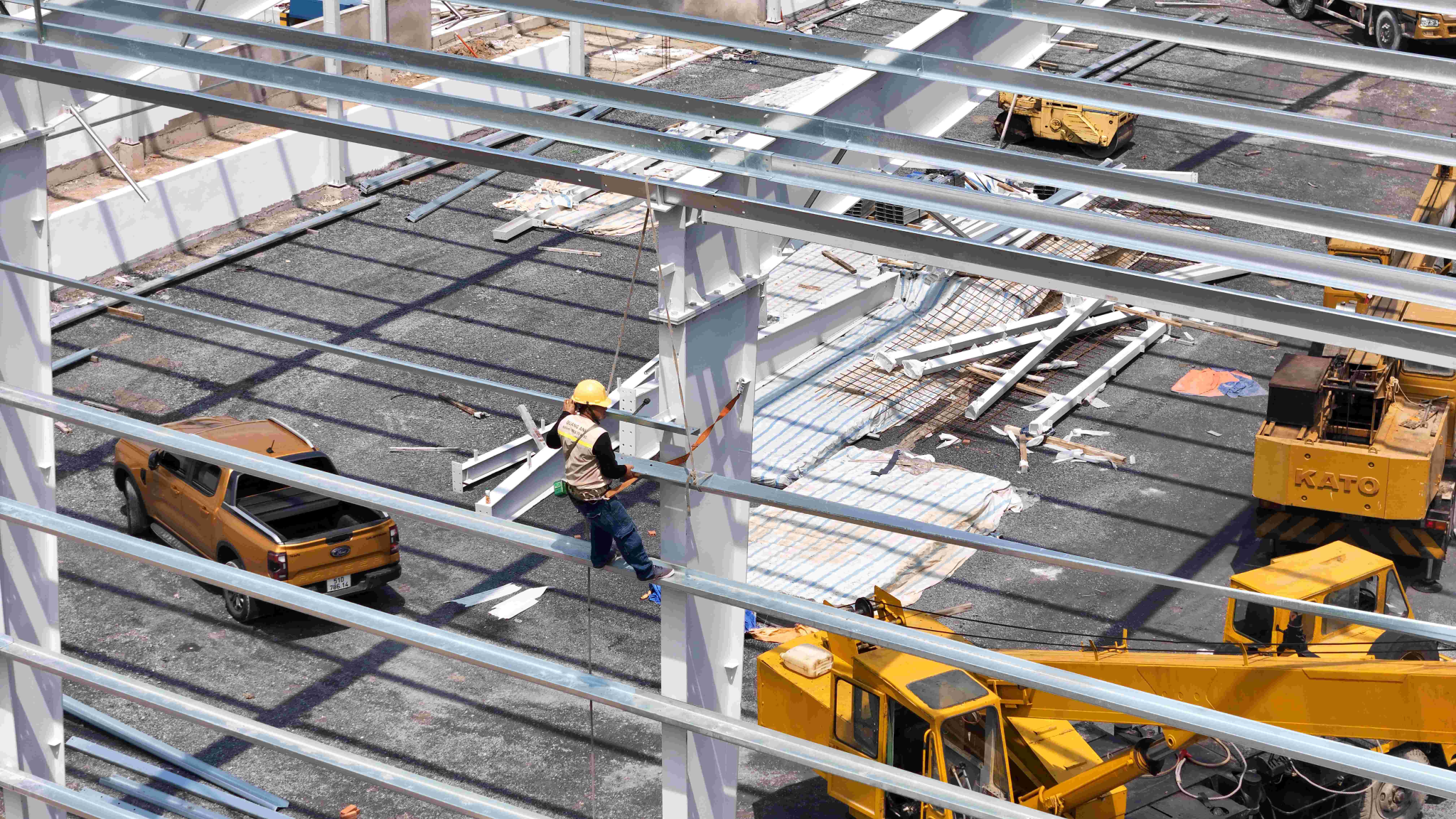
Features and Benefits of the HVAC System
The HVAC system provides significant benefits for factories such as temperature and humidity control, ensuring a comfortable working environment. Moreover, the ability to remove dirt and harmful substances improves air quality, which is critical in pharmaceutical, food production. The system is also designed to save energy to reduce the overall operating cost of the factory without sacrificing its performance.
The HVAC system (Heating, Ventilation, Air Conditioning) is a combined solution for temperature control, ventilation, and air conditioning. This system is designed to offer optimal comfort for living and working spaces, ensuring a comfortable and safe environment for users.
Definition and ClassificationThe HVAC system is widely applied not only in residential buildings but also in industrial, commercial, and healthcare facilities.
Feature AnalysisThe HVAC control automatically maintains a stable indoor temperature despite changes in weather conditions. Not only does it control temperature, the system also manages humidity. The humidity management function reduces mold and bacteria growth, protecting health and architectural longevity.
The ability to improve air quality (IAQ – Indoor Air Quality) is also noteworthy, thanks to the air filtering and circulation system which removes impurities like dust and harmful microorganisms. This enhances air quality in homes, reducing the risk of respiratory diseases.
Modern systems with automation and energy-efficient HVAC features integrate smart control technology along with sensors to optimize energy efficiency. The system only operates in necessary areas, thereby reducing operational costs and protecting the environment.
Basic StructureThe HVAC system includes components:
- Heating systems: Such as furnaces, boilers, heat pumps.
- Cooling systems: Air conditioners, cooling devices.
- Ventilation systems: Fans, air handling units, air filters.
- Control systems: Central controllers, sensors, monitoring software.
Detailed BenefitsThe HVAC system not only creates comfortable environments year-round but also protects health through its ability to purify the air. Particularly important in environments like hospitals and schools. The system helps extend the life of the building and equipment, as humidity management prevents mold and corrosion effectively.
The energy-saving capability of HVAC significantly reduces operating costs, especially in large buildings. This system matches the trend of sustainable development, reducing greenhouse gas emissions into the environment.
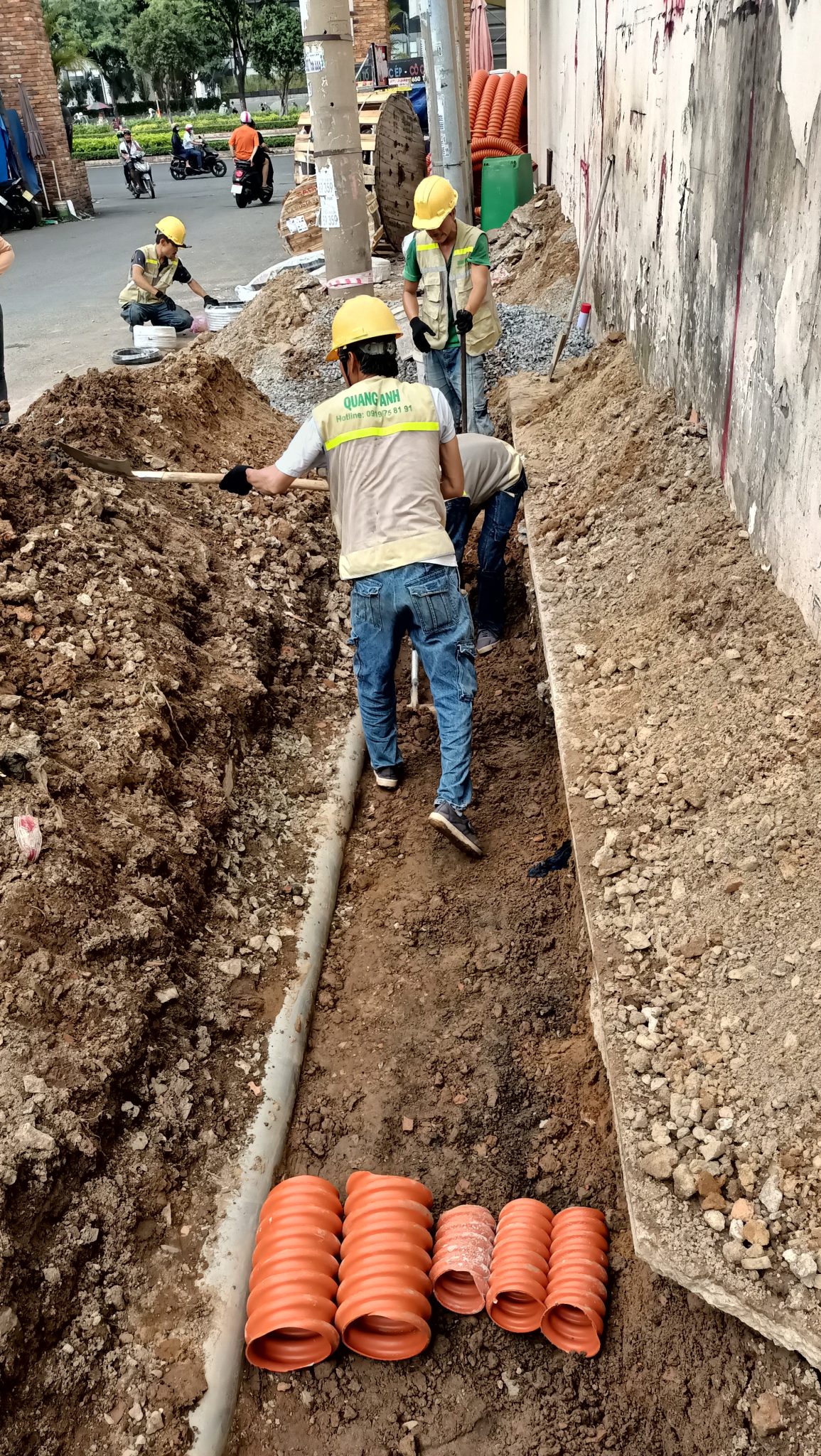
Application of the HVAC System in Factories
The HVAC system is a key element in maintaining a clean and safe environment for production, meeting the stringent demands of the pharmaceutical and food sectors. Furthermore, it creates ideal working conditions for employees, enhancing their productivity and protecting their health. For both large and small scale factories, this system is the optimal air solution for various needs.
The HVAC system in factories plays an essential role in maintaining a quality working environment. Its primary task is to adjust the environmental temperature, ensuring the health and work efficiency of employees.
- Temperature adjustment: The HVAC system in factories adjusts temperatures suitable for production characteristics and worker health, preventing overheating or overcooling, especially important in production areas or material storage.
- Providing industrial clean air: Through fresh air supply and use of multi-level air filters, it removes polluted air, dirt, odors, and harmful pathogens.
- Humidity control in factories: The industrial ventilation system helps adjust and maintain ideal humidity levels, reducing damage to machinery and materials due to low or high humidity, while also limiting bacterial and mold growth.
- HVAC energy savings: By optimizing the performance of air conditioning and ventilation equipment, the HVAC system in factories can save considerable energy, reduce costs, and enhance production efficiency.
- Noise and vibration reduction: The integration of modern technologies helps significantly reduce noise and vibration from HVAC equipment, ensuring a quiet and stable working environment.
HVAC application in special production environments such as clean rooms, cold storage, and production lines sensitive to temperature and humidity is indispensable. This not only ensures product quality but also enhances the health and comfort of workers. Thus, the HVAC system in factories not only improves working conditions but also strongly contributes to production quality and productivity.
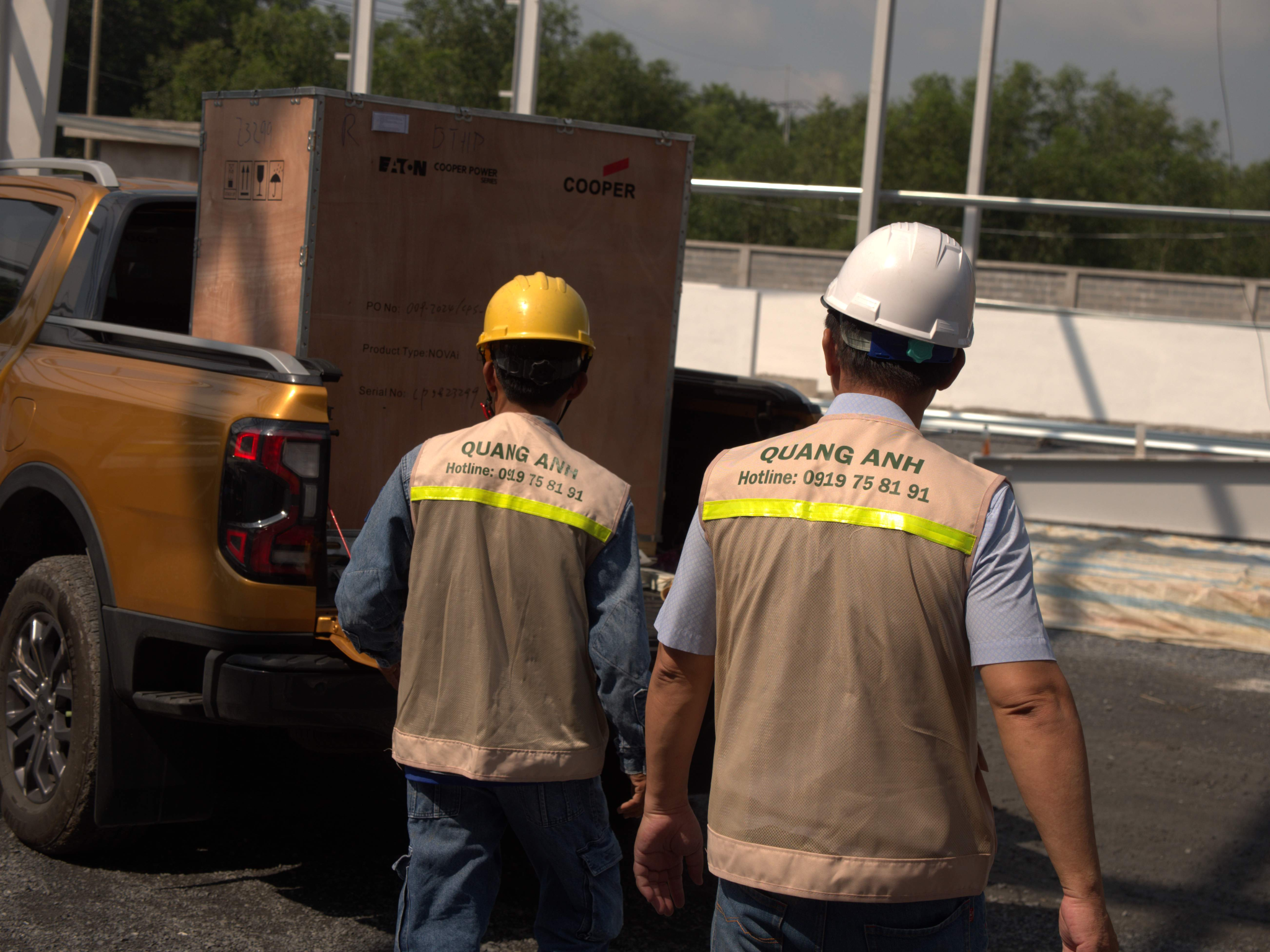
HVAC system installation services for factories not only ensure optimal working environments but also enhance energy efficiency, reduce costs, and extend equipment lifespan. This is a strategic investment for the stability and sustainable development of the factory.
Contact QuangAnhcons via Hotline: +84 9 1975 8191 for the best HVAC solutions for your factory.
QuangAnhcons provides HVAC system installation services with innovative design and technology, ensuring high performance and energy savings, along with professional maintenance for long-term stable operation.

 Tiếng Việt
Tiếng Việt 简体中文
简体中文 Deutsch
Deutsch 日本語
日本語 한국어
한국어 ไทย
ไทย Русский
Русский Français
Français
